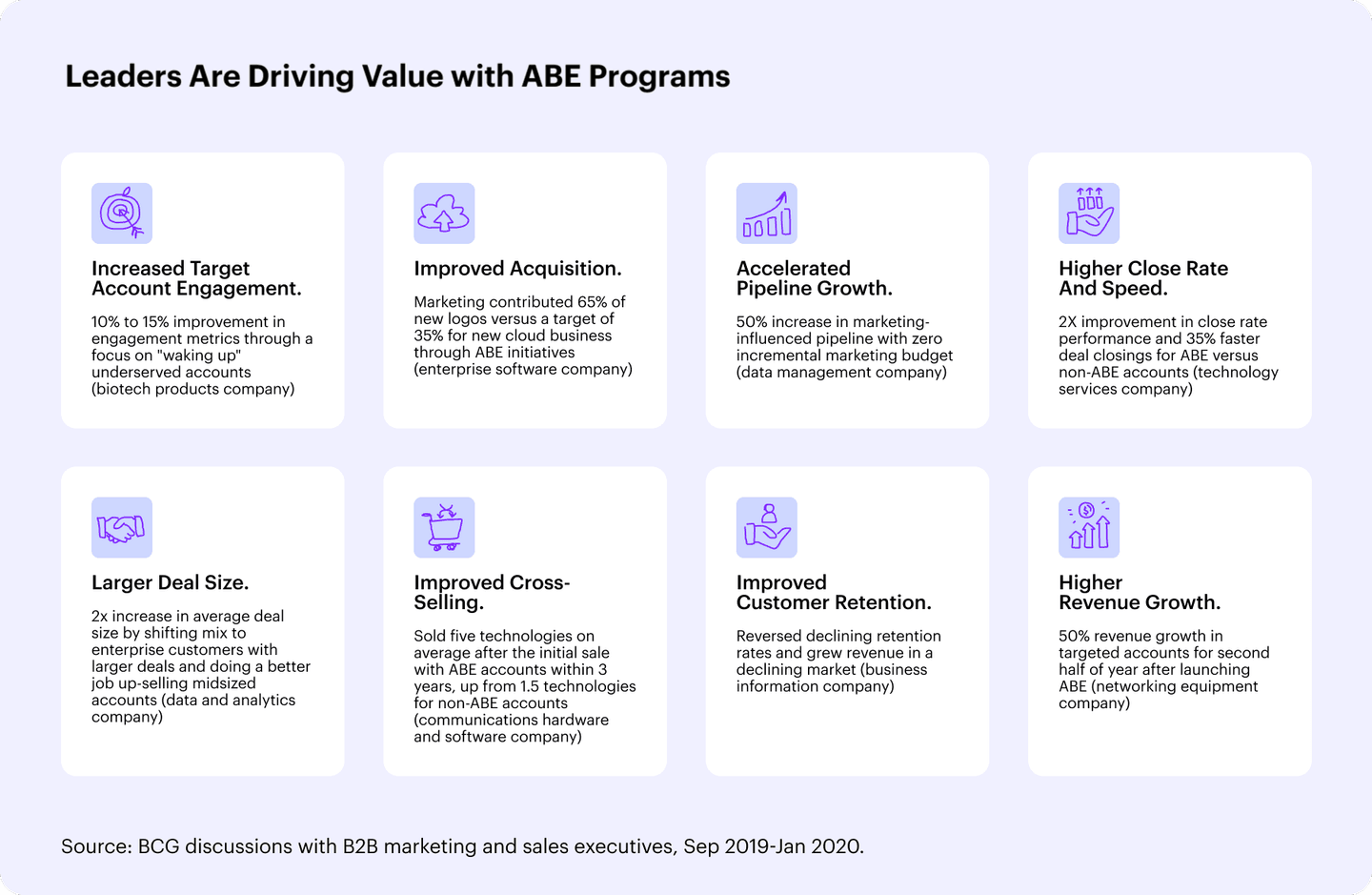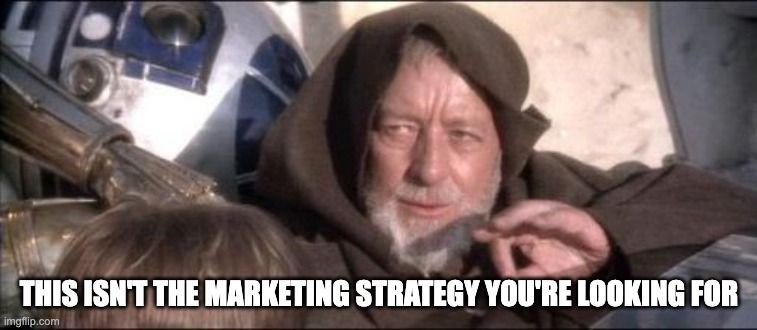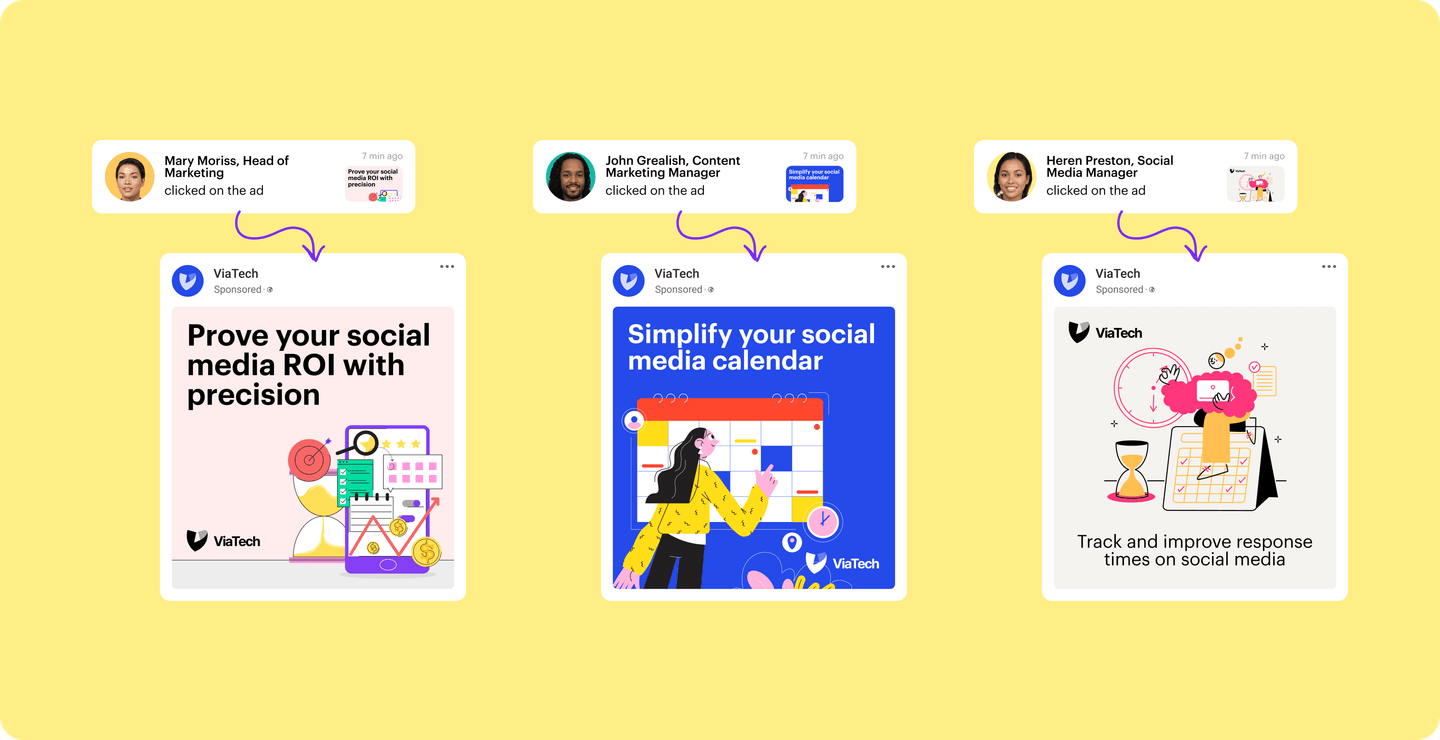Why Account-Based Engagement Is a Company-Wide Initiative
Is your ABM program a true strategy or a cute little experiment?
Too often, marketing teams pump time and money into 50 accounts they want to convert without giving it too much thought. They focus solely on the top-of-the-funnel without digging deeply into how ABM could affect the entire customer lifecycle.
And then, when this “cute little experiment” delivers low conversion rates and high costs? It may be abandoned almost as quickly as it started.
This isn’t to say that ABM doesn’t work.
It’s a call for change.
What if, instead of simply launching a message at a few accounts chosen at random by marketing, the entire team was involved in choosing the high-value accounts?
What if Sales, Marketing, and CS all worked in tandem to engage these folks throughout their buying journey, from start to finish?
That’s the promise of account-based engagement (ABE).
Where traditional ABM is failing most marketing teams
The idea of choosing the accounts you want to target, sending them specific messaging, and trying to convert them into customers isn’t faulty in itself.
The problem is how ABM is executed.
In a traditional ABM strategy, you’re probably going to face one or more of these challenges:
- Since the strategy is mainly marketing-driven, it’s hard to get buy-in across teams or access to support.
- You're targeting broadly across an entire organization, and the engagement data you receive is not actionable for your sales team.
- Without a clear strategy to engage contacts over the course of the buying journey, you’re simply pouring marketing efforts into the same pool of people over and over again, and they’re not converting.
- You’re running on a first/last touch attribution model, so whenever marketing isn’t the first or last touch, it’s very hard (if not impossible) to tie your efforts to real revenue results—making it much harder to justify your costs.
Many ABM professionals agree with the statement that account-based marketing is a misnomer—in reality, your ABM strategy should never be just a marketing project.
Unless Marketing, Sales, and Customer Success are aligned on the accounts they want to target and how they engage those accounts, your ABM program will be fighting a constant uphill battle, and will probably die on that hill.
How things change with account-based engagement
First of all, let’s define engagement.
As our CEO, Dmirtri Lisitski says: “We believe that people make decisions, not accounts.”
At Influ2, when we talk about engagement, we’re not just talking about those big shiny accounts on your list.
For us, ABE is about engaging with the real humans in buying committees at your target accounts, and building a conversation with them that lasts from the first time they hear about you to the moment they sign the contract (and beyond).
“The biggest reason ABE performs better?” adds Peter Lewis, Fractional CMO at Strategic Pete, “It prioritizes relationships over lead lists.”
He explains: “We transitioned to an ABE strategy when we noticed that standard ABM was too concentrated on engaging accounts in the hopes of eventually getting them activated, rather than on the actual activation. Target advertising and SDR outreach are easy; if the real decision-makers don’t engage, all you have is a list of ideal customers who aren’t responding. ABE completely shifted how we approach engagement.”
And these aren’t the only people who have seen greater success with ABE. Studies have shown that ABE programs are proven to deliver results:
- 97% of marketers using ABE said they experienced a higher return on investment.
- 83% saw a positive impact on pipeline growth.
- ABE leaders have seen major gains in account engagement, customer acquisition, pipeline growth, funnel velocity, deal sizes, retention, and revenue growth.

ABM vs ABE: How do these strategies differ?
Your buyers are being bombarded by marketing.
You and a million other companies are vying for their attention, and with AI SDRs and other artificial intelligence platforms generating even more noise, it’s harder than ever to break through.
When you treat ABM like a marketing experiment, dutifully targeting big accounts without a deeper strategy behind it, it’s not going to work.
But when you focus on account-based engagement, you’re more likely to build a strategy that supports the entire buying journey.
Here are some of the major differences between ABM and ABE:
| ABM | ABE |
| Broad focus on a list of accounts | Narrow focus on the people within a buying committee at target accounts |
| Marketing-led strategy, often executed in a silo | A strategy that’s developed and executed by Marketing, Sales, and CS |
| Generates “leads” that may never be contacted by sales, or may never convert | Develops a list of contacts that are ideal customers, and targets those contacts with both Marketing and Sales working in tandem |
| Is often tied to the top of the funnel | Helps influence deals throughout their lifecycle, from pipeline generation to deal progression, and even into expansion |
As our head of ABM, Anna Tsymbalist, mentioned in a recent podcast:
When you’re looking at MQLs as your main target, you’re optimizing for something so early in the funnel that you could be setting yourself up for failure. What happens to these MQLs down the road? Is sales wasting time disqualifying them? Are they churning? Are they a happy customer? Are they advocates?
If you’re not optimizing for the long-run results, you might as well be creating a bucket with holes in it.
The point? Stop optimizing for MQLs, and focus on the people.
Here’s how to make the switch from ABM to ABE
Let’s get real for a second. If you’re looking for a fast tactic to earn some quick wins, this is not the strategy you’re looking for.

In fact, more than half of all ABE programs fail the first time around.
However, if you:
- Have been trying traditional ABM, but can’t tie it directly to any significant results
- Feel disconnected from Sales and CS, and want to work together more closely with these teams
- Know those team leaders are also invested in making a change
…then you are probably in a good position to build an account-based engagement program
And the same study found that 75% of the companies who were willing to work through the challenges they faced initially went on to succeed with ABE.
True, building an ABE strategy takes time to start, and effort to maintain. It will probably require a complete overhaul of your GTM strategy.
But better conversion rates and faster sales cycles—plus more visibility over how your efforts influence revenue—are worth the work.
Let’s walk through some of the basic steps involved in starting your first ABE strategy.
Get buy-in from leadership across Marketing, Sales, and CS
Remember those 50% of ABE programs that failed the first time they tried? Well, the same study showed that an overwhelmingly popular reason for failure was a lack of support from sales and alignment with marketing.
So, as Marketing Strategy Leader Carrie Holmes said: “Do not “pass go” without having Sales Leadership commitment. ”
The first step?
Build open communication with your company’s go-to-market teams.
That means leadership from Sales, Marketing, and Customer Success should be in meetings together (in-person or virtually), talking about how they can support each other and engage potential customers throughout their lifecycle.
As with any new strategy, real data will be your strongest argument.
Says Peter Lewis: “Getting buy-in for ABE wasn’t difficult when we continued to show disparity in engagement rates.”
Anna Tsymbalist adds: “When the entire organization sees data that proves the accounts you’re going after will bring success in the long run—that’s how you get buy-in. That’s when Sales gets excited to get on that call. That’s when CSMs get excited to onboard people. It’s a win-win situation for everyone.”
When presenting the idea of ABE to your organization, paint the picture in the light of benefits for all teams, and you’ll make the path much easier for yourself.
Focus on aligning with Sales and CS on objectives and target accounts
Once Sales, Marketing, and CS are ready to move forward together, it’s time to align on your goals and your target accounts.
First, set reasonable goals. Think about what metrics would indicate the success of the program as a whole—conversions, engagement, retention, or other KPIs.
Bring your current ABM program data to the table and think strategically about what you want to improve.
Where will each of these teams—and the company as a whole—see improvements?
Next, one of the hardest parts of building an ABE strategy: audience selection.
When you align Marketing with Sales and CS, you know you’re bringing in the right type of accounts and converting the right opportunities for all three teams to be happy about.
To build your list of target accounts:
- Work with sales and CS to identify key markers of successful customers in your current book of business.
- Build a list of accounts that fit that criteria.
- Narrow down that list by industry, needs, and remove any current customers or bad-fit leads.
- Use research tools to map the buying committees within those accounts, and identify key contacts your team will target. (read this to learn how)
If working together to build the list isn’t realistic for your team, start by building that list of target accounts as a marketing team.
Then, bring that list to Sales and CS, and get their input. This simpler method can help move things forward when cross-team collaboration gets sticky.
When this exercise is done, you’ll have a list of individuals that all three teams agree on and can work to engage simultaneously.
Align on the channels of engagement that both teams will use throughout the buying journey
What tactics will Sales use to reach out to contacts at target companies? How will Marketing support that journey by targeting those same people?
This is where identifying your best channels comes into play.
For marketing, this will normally include paid advertising, social media marketing, and content across the website.
Sales channels will differ depending on the target audience, but aside from reaching out directly by phone or email, salespeople may also send LinkedIn messages, or try to engage indirectly with their target contacts online.
The key here is to analyze which channels deliver the best results at different points in the buying process.
At Influ2, our team uses engagement cycles to maintain interest and keep our product top-of-mind for potential customers.
For three months, we’re actively trying to engage with them—they’ll get value proposition and thought leadership messaging in ads, while the entire buying committee also gets an email sequence and cold calls from SDRs.
If they don’t convert, we send them to a nurture sequence with low-intensity brand awareness messaging for three months.

The aim is to stay top-of-mind, because very often, the engagement may have worked, but it’s just not the right timing.
Once we’re ready, we’ll recollect the buying group and put them through another engagement cycle with updated content based on performance.
To see our entire ABM approach, check out this playbook: The Contact-Level ABM Framework
Use contact-level ABM and share intent signals directly with your sales team
While most ABM tools allow you to focus broadly on target accounts, here at Influ2, we align with Sales on the individual contacts we want to engage with, and use our own platform to send targeted ads to these contacts.
When you target individuals in buying committees, you can see at a contact level who is engaging with what messages (if you're using Influ2). Those are direct intent signals that you can send to your sales team.

Instead of a beige flag that says, “Someone from this account clicked on your website,” you can point to individual contacts with a bright neon sign that tells Sales, “Hey! This person is showing intent right now!”

Start by building buyer journeys for different personas.
If you know who’s involved in a deal (Execs and VPs, end users, procurement teams, etc.), and you know when those people enter a deal cycle, you can better target them with a personalized journey for their persona.
“Dividing our audience by persona is something that helped me keep engagement levels high,” says Anna of our program here at Influ2.
Once you have those persona-based insights, you can show your sales team who in a buying committee is engaged, what messaging piqued their interest, and how many actions they’ve taken that signal intent.
Launch a few pilot campaigns, and take time to analyze and learn from those results
Remember, you’re in this for the long haul. This isn’t just an experiment your team wants to try—it’s a complete change to the way you target accounts throughout their lifecycle.
So, start with a few campaigns.
During this time, regularly get together with your sales and CS teams to talk about the results you’re all seeing.
You may not see overnight results, but by tracking the same metrics and KPIs, you’ll monitor gradual growth where it really matters.
Here are some ideas on what to track:
- Have all teams measure revenue and pipeline influence on their own efforts. With Influ2, you can see what direct influence your advertising efforts had on closed deals.
- Track ad CTR and conversion rates, but take it a step further if possible and monitor which stages of the buying journey and engagement cycles see higher conversions.
- Use your previous ABM performance as a benchmark to compare growth quarter-over-quarter or year-over-year, depending on your typical sales cycle length.
Something else to keep in mind is what Peter Lewis calls “micro-engagements,” including ad clicks, post engagement, and responses to non-sales messages.
When those signals inform your strategy, incentives align, and marketing focuses on building relationships instead of MQLs.
Here at Influ2, about 86% of all outbound opportunities last year were ABM-influenced. Being able to measure with our own platform means we can prove the value of our ABE strategy.
Psst… Want to see how it works? Book a demo with our team.
Sold on account-based engagement?
If you’ve made it this far, you’re not here to build some quick wins and get leadership off your back about ABM.
You’re invested in building a strategy alongside the rest of your org, and you’re ready to put in the work to pull it off.
Just remember, ABE is a long-term relationship that requires patience.
Marketing Strategy Leader Carrie Holmes adds this piece of advice: “Be patient. Account-based engagement is a proven force multiplier, but it takes time. You will get pressure to show immediate returns, but the value in this approach is a compound benefit over time. It’s important to set this context early with leadership.”
The best way to get started? Put one foot in front of the other.
Start small, set a good foundation, and you’ll be preparing to build and maintain a strategy that will succeed in the long run.
Dominique Jackson is a Content Marketer Manager at Influ2. Over the past 10 years, he has worked with startups and enterprise B2B SaaS companies to boost pipeline and revenue through strategic content initiatives.


